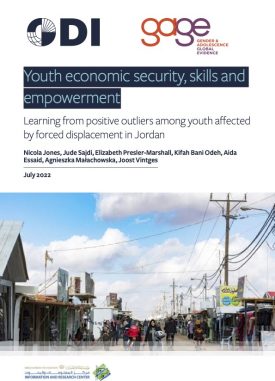On a per capita basis, Lebanon currently hosts the largest number of refugees in the world and the vast majority of the Syrian and Palestinian refugees living in Lebanon have been there for a decade or longer. As we enter 2022, and the third year of the Covid-19 pandemic, it is estimated that Lebanon’s GDP has fallen by 58%. This has resulted not only in an explosion of need for humanitarian assistance, but also growing concerns about how to meet the Sustainable Development Goal (SDG) targets and how best to support adolescents and young people transitioning to adulthood in the midst of intertwined and escalating crises.
This research, which began with an extensive review of secondary data, uses primary qualitative data collected from Syrian and Palestinian refugees living in Lebanon in the first half of 2021 to understand what sets the most successful young refugees apart from their peers.
Our aim is to identify programming implications and recommended actions for donors, United Nations (UN) agencies and non-governmental organisations (NGOs) to support disadvantaged adolescents and youth in line with the SDG targets related to youth employment.
Suggested citation:
Presler-Marshall, M., Youssef, S., Jones, N. and Małachowska, A. (2022) ‘Each one of us had a dream’: An exploration of factors supporting gender-responsive education and economic empowerment pathways for refugee youth in Lebanon. London: ODI (https://www.gage.odi.org/publication/each-one-of-us-had-a-dream-an-exploration-of-factors-supporting-gender-responsive-education-and-economic-empowerment-pathways-for-refugee-youth-in-lebanon/)
